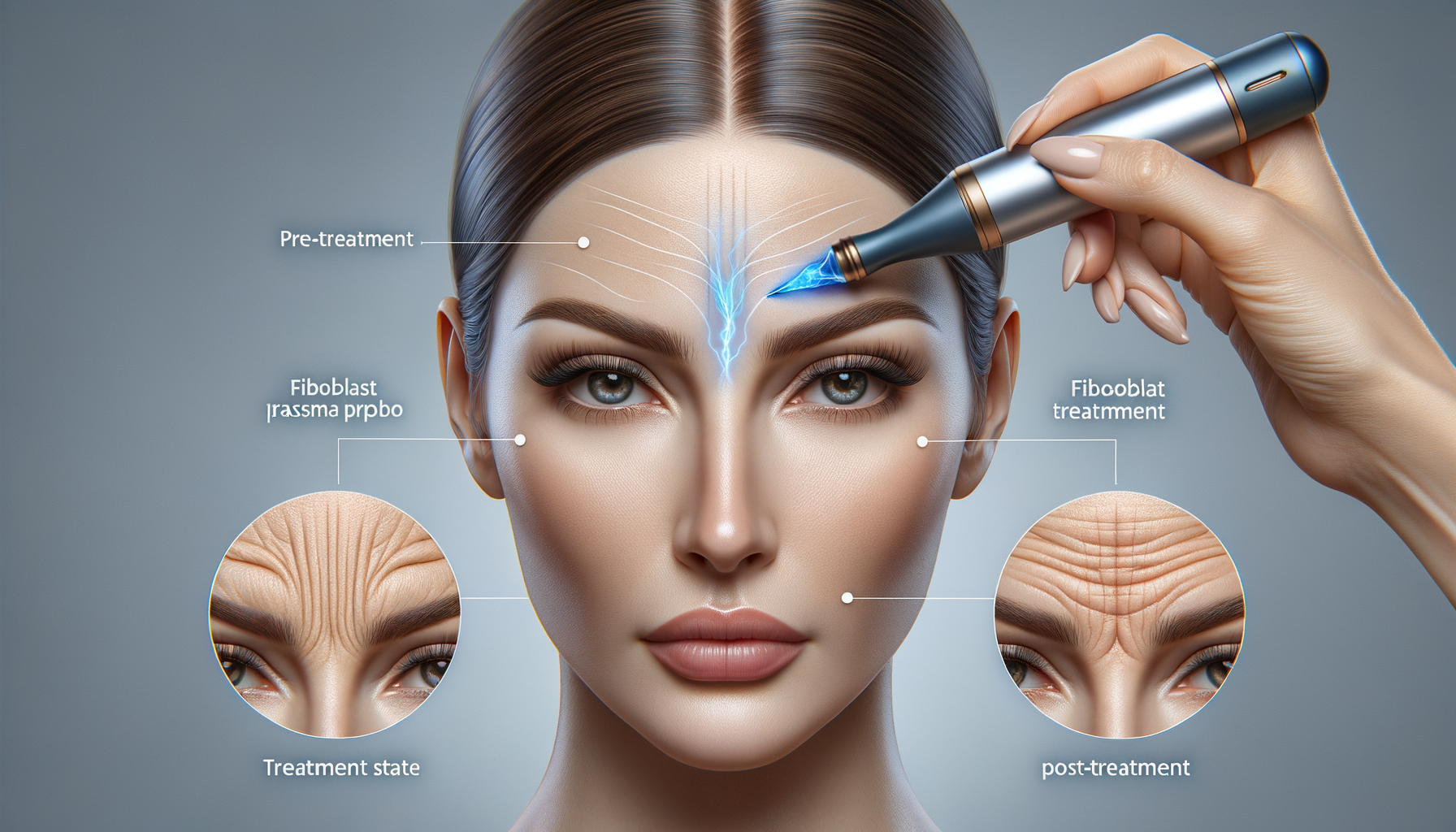Understanding Fibroblast Treatment on Forehead Wrinkles
Fibroblast treatment, also known as plasma skin resurfacing, is gaining popularity as a non-surgical option for reducing forehead wrinkles. This innovative procedure leverages the power of plasma energy to stimulate collagen production, which is crucial for maintaining skin elasticity and youthful appearance. The process involves the use of a specialized pen-like device that emits a small electrical arc. This arc creates controlled micro-injuries on the skin’s surface, prompting the body’s natural healing processes.
The treatment is particularly effective for forehead wrinkles as it targets the superficial layers of the skin, where these wrinkles often form. By enhancing collagen and elastin production, fibroblast treatment smoothens the skin, reducing the appearance of lines and wrinkles. It is a suitable option for individuals seeking a less invasive alternative to traditional surgical methods, offering a significant reduction in recovery time and risks.
Benefits of fibroblast treatment include:
- Minimally invasive procedure
- Short recovery period
- Long-lasting results
- Cost-effective compared to surgical options
As with any cosmetic procedure, it is essential to consult with a qualified specialist to determine if fibroblast treatment is the right option for your skin type and needs.
What to Expect During a Fibroblast Forehead Procedure
Undergoing a fibroblast forehead procedure involves several steps designed to ensure safety and effectiveness. Initially, a consultation with a trained professional will assess your skin’s condition and discuss your aesthetic goals. On the day of the procedure, the practitioner will cleanse your forehead area and apply a topical anesthetic to minimize discomfort.
Once the skin is prepared, the fibroblast device is used to deliver plasma energy to the targeted areas. The sensation during the procedure is often described as a slight tingling or warmth. The treatment session typically lasts between 30 to 60 minutes, depending on the extent of the area being treated.
After the procedure, it is common to experience some redness and swelling, similar to a mild sunburn. Small scabs may form on the treated areas as part of the natural healing process. These scabs usually fall off within a week, revealing smoother and firmer skin underneath.
It’s important to follow post-treatment care instructions provided by your practitioner to ensure optimal results and minimize potential side effects. This may include avoiding sun exposure and using gentle skincare products.
Recovery Tips After Fibroblast Plasma Treatment
The recovery period following a fibroblast plasma treatment is crucial for achieving the desired results. Proper aftercare helps in reducing healing time and enhancing the effectiveness of the treatment. Here are some essential tips to consider during the recovery phase:
- Keep the treated area clean: Gently cleanse your forehead with a mild, non-abrasive cleanser to prevent infection and irritation.
- Moisturize regularly: Use a hydrating, non-comedogenic moisturizer to keep the skin supple and support the healing process.
- Avoid sun exposure: Protect your skin from direct sunlight by wearing a broad-spectrum sunscreen with high SPF and using a wide-brimmed hat.
- Do not pick the scabs: Allow the scabs to fall off naturally to prevent scarring and ensure even skin texture.
- Stay hydrated: Drinking plenty of water aids in skin recovery and maintains overall health.
Following these tips can significantly enhance the outcome of your fibroblast treatment, leading to smoother and more youthful-looking skin. Always adhere to the specific aftercare instructions given by your practitioner for the best results.
Comparing Fibroblast Treatment with Other Wrinkle Reduction Methods
Fibroblast treatment is one of several options available for reducing forehead wrinkles. Understanding how it compares to other methods can help individuals make informed decisions about their skincare routine. Traditional options like Botox and dermal fillers offer quick results by relaxing facial muscles or adding volume to the skin. However, these methods require regular maintenance and can be costly over time.
On the other hand, fibroblast treatment provides a more natural approach by enhancing the skin’s own regenerative abilities. The results are gradual but long-lasting, with many patients experiencing improvements for up to two years. Additionally, fibroblast treatment avoids the use of synthetic substances, making it an attractive choice for those seeking a more organic solution.
Surgical options, such as facelifts, offer dramatic results but come with higher risks, longer recovery periods, and increased costs. Fibroblast treatment bridges the gap between non-invasive and surgical methods, offering a balance of effectiveness and safety.
Ultimately, the choice of treatment depends on individual preferences, budget, and desired outcomes. Consulting with a skincare professional can provide personalized recommendations based on specific needs.
Conclusion: Is Fibroblast Treatment Right for You?
Fibroblast treatment for forehead wrinkles is an innovative and effective solution for those seeking non-surgical options for skin rejuvenation. Its ability to stimulate collagen production naturally makes it a compelling choice for individuals looking to reduce the signs of aging while avoiding invasive procedures.
By understanding the process, what to expect during the procedure, and the necessary aftercare, individuals can make informed decisions about their skincare journey. Whether you are considering fibroblast treatment or exploring other options, consulting with a qualified professional is essential to determine the best course of action for your skin’s needs.
With proper care and realistic expectations, fibroblast treatment can offer a path to smoother, more youthful skin, helping you feel confident and revitalized.




Leave a Reply